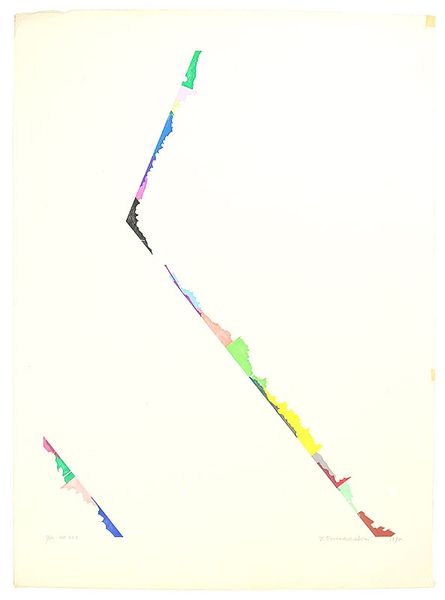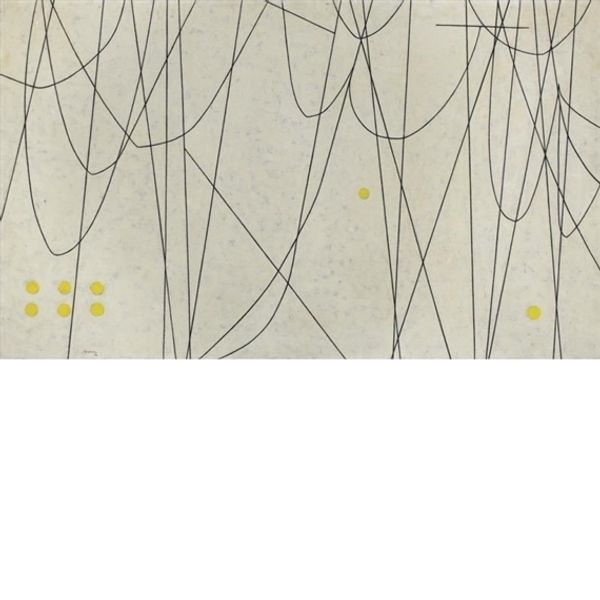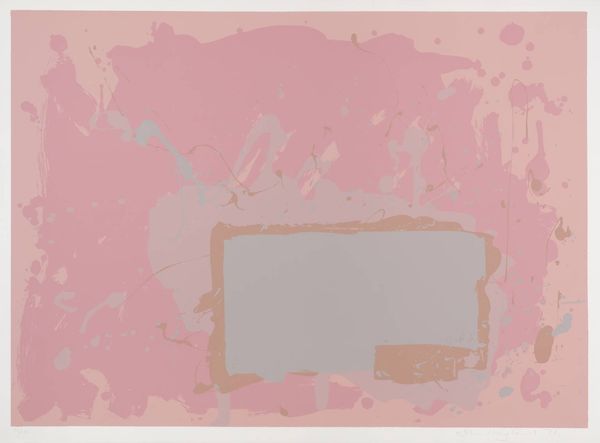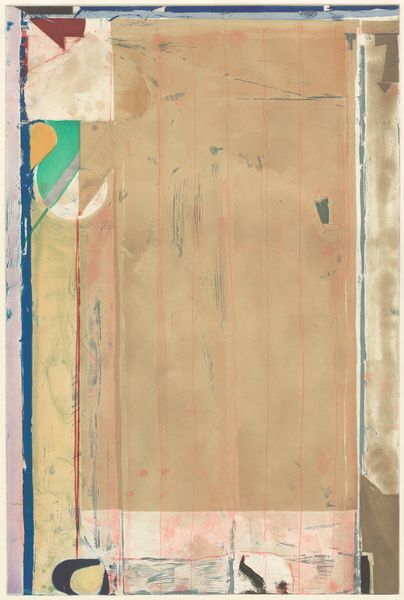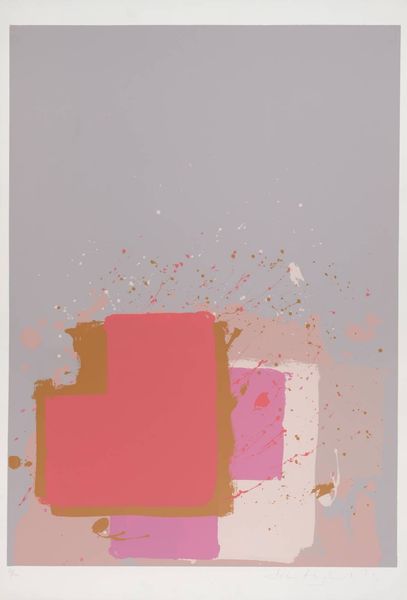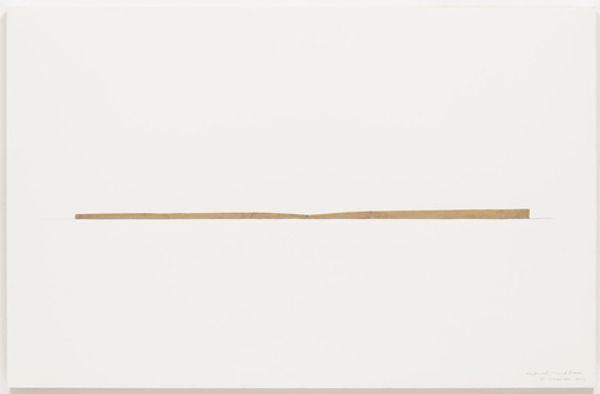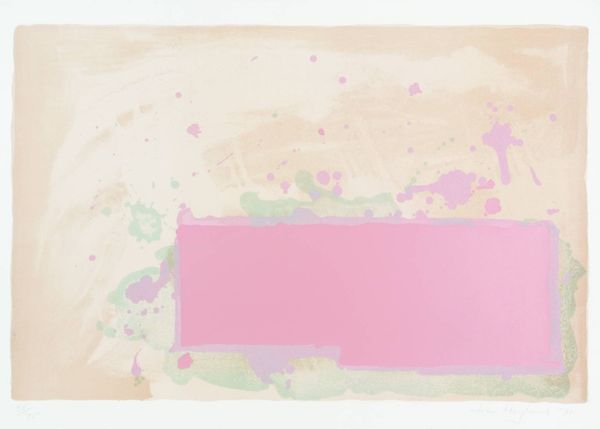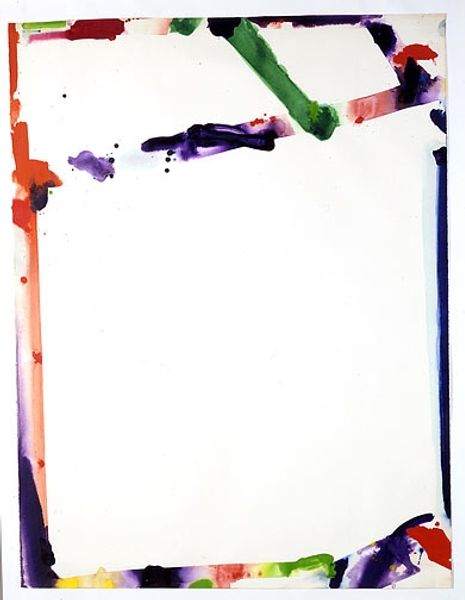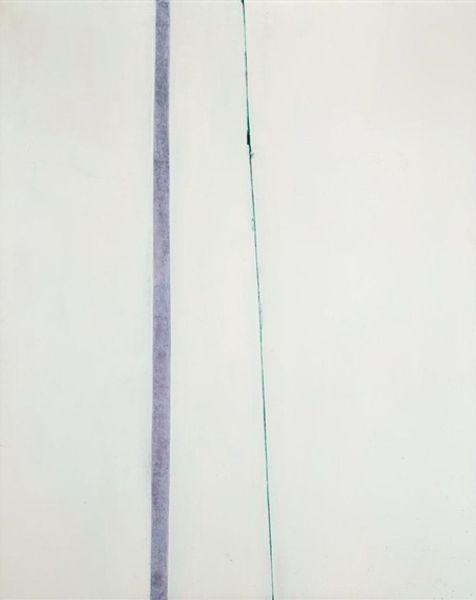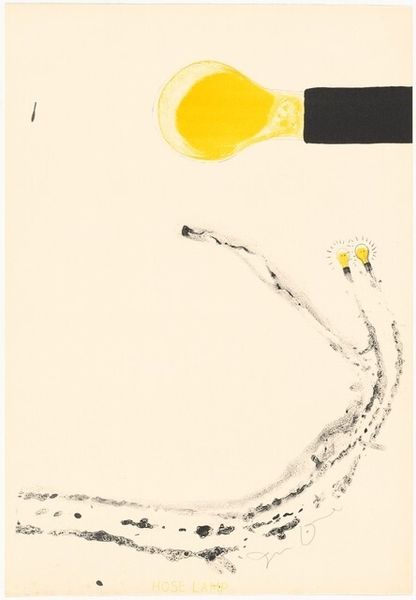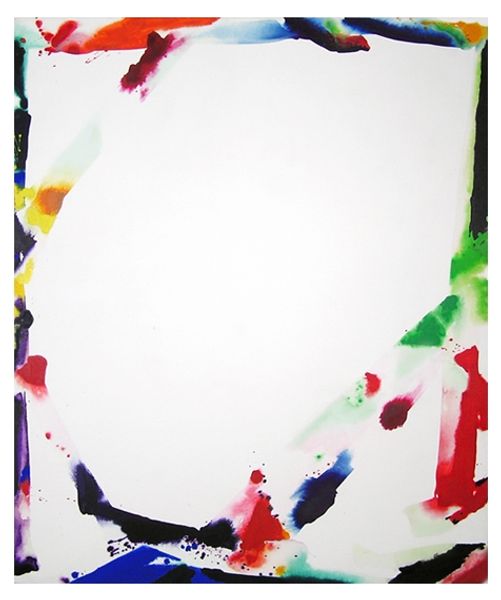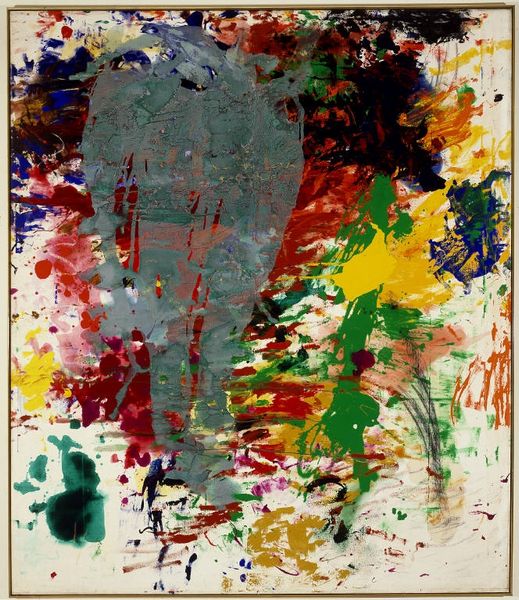
#
geometric
#
abstraction
#
line
#
modernism
Copyright: Funasaka Yoshisuke,Fair Use
Curator: So, here we have Funasaka Yoshisuke’s "Work JY234" from 1971. Editor: My first impression is this feels surprisingly playful. It has this lightness despite the very precise geometry. Is that odd? I find it airy! Curator: Not odd at all. While the work embodies modernist abstraction through its use of geometric shapes and line work, you are keying into the composition that incorporates some element of visual space around those forms. It prompts one to think about the materials; look at the different colored strips— how they interact on the surface—and the way that process gives them a kind of agency. Editor: You’re right, it feels deliberately hand-made; far from the machine aesthetic, if you know what I mean? It's like the imperfections give it warmth, like the hand of the artist is right there, almost tangible. Curator: The artist’s touch is evident, isn’t it? This wasn’t a mass produced image at all. Considering this was created in 1971, we can start thinking about how industrial processes were either being celebrated or even challenged during the later stages of Modernism. This might even speak to Japanese aesthetics like Wabi-Sabi where perfection isn’t quite the objective, but this particular aesthetic comes through using what we have available in order to imbue a more significant emotional message. Editor: I like that, that idea of imperfect perfection... the little squiggles and misalignments somehow make the colors brighter, the composition more lively. The yellow shape too -- is that just an abstract reference to the rising sun, or is there more? Curator: The cultural implications are deep if that sun form really speaks to Japan itself. Consider how Japanese artists from this period struggled with the global dominance of Western art movements like Abstract Expressionism and Pop Art; while they embraced abstraction, many retained this sensibility that felt distinctly Japanese through their craftsmanship. Editor: This feels quite radical actually: a work deeply rooted in place while playing in a very international field. It really comes down to the artist's process and the decisions being made while in the studio, right? Curator: Absolutely. It shows how one artist, at one moment in time, processes both materials and identity through their studio output. What a concept! Editor: True. So much contained in what, at first glance, seems like a rather simple piece!
Comments
No comments
Be the first to comment and join the conversation on the ultimate creative platform.
